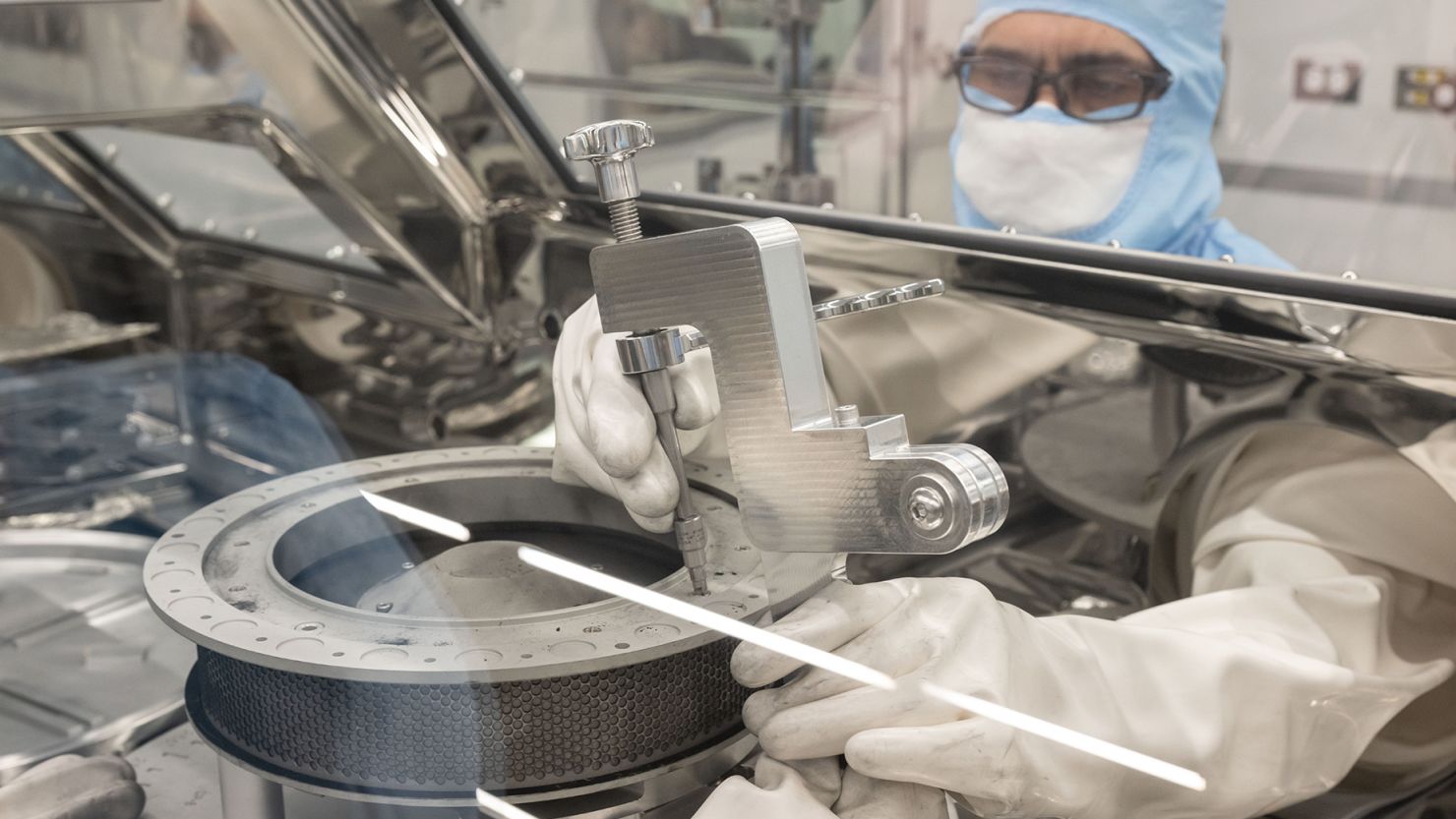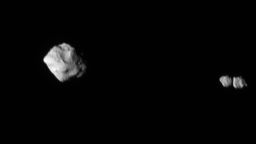Sign up for CNN’s Wonder Theory science newsletter. Explore the universe with news on fascinating discoveries, scientific advancements and more.
Two stubborn fasteners trapped invaluable material sampled from an asteroid — but after a monthslong process, it has finally been released, NASA announced Thursday.
The space agency already harvested about 2.5 ounces (70 grams) of rocks and dust from its OSIRIS-REx mission, which traveled nearly 4 billion miles to collect the unprecedented sample from the near-Earth asteroid called Bennu.
But NASA revealed in October that some material remained out of reach in a capsule hidden inside an instrument called the Touch-and-Go Sample Acquisition Mechanism — a robotic arm with a storage container at one end that collected the sample from Bennu.
The sampler head is held shut by 35 fasteners, according to NASA, but two of them proved too difficult to open.
Prying the mechanism loose is no simple task. The space agency must use preapproved materials and tools around the capsule to minimize the risk of damaging or contaminating the samples.
These “new tools also needed to function within the tightly-confined space of the glovebox, limiting their height, weight, and potential arc movement,” said Dr. Nicole Lunning, OSIRIS-REx curation lead at NASA’s Johnson Space Center in Houston, in a statement. “The curation team showed impressive resilience and did incredible work to get these stubborn fasteners off the TAGSAM head so we can continue disassembly. We are overjoyed with the success.”
To address the issue, NASA said two tools were created from surgical steel — “the hardest metal approved for use in the pristine curation gloveboxes.”
Before tackling the stuck fasteners, a team at Johnson Space Center tested the tools in a “rehearsal lab,” slowly amping up the torque applied to ensure the new tools could successfully remove the unyielding clasps.
What the asteroid sample has revealed so far
As of Thursday afternoon, NASA said the trapped sample material had not yet been revealed. A “few additional disassembly steps” remain, according to the space agency. After taking those steps, the hidden cache can be photographed, extracted and weighed, NASA said.
An analysis of material from Bennu that NASA researchers had harvested last fall already revealed the samples from the asteroid contained abundant water in the form of hydrated clay minerals as well as carbon.
Scientists believe signs of water on asteroids bolster the current theory of how it arrived on Earth billions of years ago.
“The reason that Earth is a habitable world, that we have oceans and lakes and rivers and rain, is because these clay minerals landed on Earth 4 billion years ago to 4 and a half billion years ago, making our world habitable,” OSIRIS-REx principal investigator Dante Lauretta said in October. “So we’re seeing the way that water got incorporated into the solid material.” Lauretta is a regents professor of planetary science and cosmochemistry at the University of Arizona.
Some of the Bennu samples that were previously harvested have been hermetically sealed in storage containers for future study over the course of decades, according to NASA’s Thursday news release.







